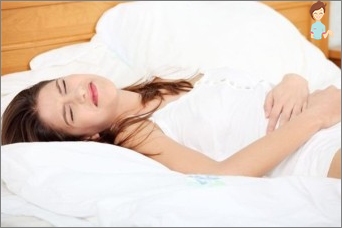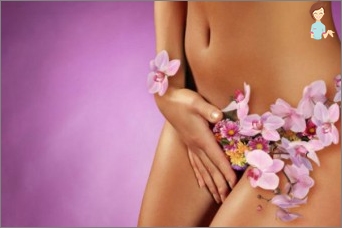Cystitis
Acute cystitis – an inflammatory process that is often found among women aged 20-40 years. From pathology you can completely get rid of, if you immediately consult a doctor and carry out a course of therapy
Simple uncomplicated infection of the lower urinary tract or, in other words, acute cystitis is inflammation affecting the bladder mucous membrane. Nowadays, this is the leading pathology among the diseases of the urinary system.
This disease occurs mainly in women, since they are significantly shorter than the urinary channel and wider, which significantly simplifies the task for the infectious agent. In men, urological diseases are more often the cause of acute cystitis, for example, prostate adenoma or medical manipulations, such as long-term bladder catheterization.
Classification
According to criteria, the disease is classified as follows:
 In the Stage – acute and chronic;
In the Stage – acute and chronic;- By etiology – bacterial, medicinal, radius (and other agents);
- Under the condition of occurrence – primary and secondary;
- By morphological characteristics – catarrhal, ulcerative, hemorrhagic, gangrenous, necrotic, polypotic, incrusting, necrotic;
- According to the degree of inflammation – trigonite, cervical, diffuse.
Escherichia coli Escherichia coli becomes predominantly. Speaking about the causes of the disease, you need to mention and about bacteria (Proteus SPP., Klebsiella SPP., Staphylococcus saprophyticus, Enterobacter SPP., Pseudomonas Aeruginosa and DR.), viruses (adenovirus, cytomegalovirus, herpes virus), fungi (for example, Candida), chlamydia, helminty (churches, schistosomes).
The infectious agent can enter the urinary bubble ascending, lymphogenic or hematogenic way.
In addition to the female anatomy, the factor in the occurrence of the disease is:
- Supercooling of the body, especially legs and zone area (short skirts, thin tights, wet shoes);
- Inflammatory diseases in history (gynecology, urology, venereology) without adequate treatment or not to end;
- Chronic focus of infection in the body (caries, adenoids, chronic pyelonephritis);
- Concomitant diseases (diabetes mellitus, adenoma);
- Acute, fried, fatty food in large quantities;
- Frequent constipation;
- Prolonged sedentary position at work or in the car;
- Non-compliance with intimate hygiene rules (rare tampon replacement, misunderstanding, long-term underwear);
- Contraception with spermicides that do not protect against entering the vagina of infectious agents of the sexual partner;
- Immunosuppressive states (exhausting sports workouts, chemotherapy, AIDS).
The most common variant of this disease is sharp cystitis in women whose symptoms we will consider below.
Diagnosis of cystitis
Diagnosis of the disease is based on clinical symptoms and urine analysis data.
Basic Symptoms: Feeling «Rubber» When urinating, rapid urination with small portions, pain in the lower abdomen, painful urination, urinary color change, urine with blood, subfebrile temperature.
The following studies are applied to form an accurate diagnosis:
 Deployed clinical blood test and general urine analysis;
Deployed clinical blood test and general urine analysis;- Culture studies of urine with the determination of sensitivity to antibiotics of a bacterial agent;
- Ultrasound diagnostics of urinary system organs before and after urination;
- Cystoscopic study with biopsy according to indications (survey of the mucous membrane of the bladder is carried out by a special apparatus – a cystoscope introduced through urethra);
- Contrast X-ray studies (survey urography, cystography, urethrography, etc.);
- CT or MRI according to indications (as a rule, this is a suspicion of cancer processes in the body).
In the formulation of diagnosis, acute cystitis requires differential diagnosis with the following diseases:
- Acute pyelonephritis. Often in the acute course of the disease, the temperature in the patient is subfebrile, at a temperature of more than 38, an infection in the kidneys is possible;
- Cystalgia. This disease occurs in hormonal failures and is most often due to blood violation in the region of the triangle and bladder due to local pathological processes. But, as well as acute cystitis, is characterized by rapid, painful urination under normal urinary analysis indicators;
- Stones bladder. Pollakiuria arises only in motion;
- For men is important differentiation with prostatitis, in which urination is expensive at night;
- Tumors and metastases.
The main objectives of the treatment of acute cystitis:
- Fast relief of clinical manifestations of the disease;
- Elimination of the causative agent of infection;
- Reinfection Prevention (Disease Recurria).
Some features of diagnosis implies acute hemorrhagic cystitis. From the symptoms of the uncomplicated inflammatory process, it is distinguished by the presence of blood in the urine.
Characteristic of the same frequent and painful urine, including at night, but at the same time the cutting pain is enhanced at the end of urination, and numerous unsuccessful urges occur. These symptoms often join an increase in temperature above 38, fever, chills, indisposition.
Acute hemorrhagic cystitis has the following complications:
- Blockage of urethra of blood clutch;
- The spread of infection through the affected blood vessels;
- Pyelonephritis;
- Anemia;
- Sepsis.
Features of the treatment of acute cystitis
Antispasmodics and analgesics are used to eliminate pain syndrome, which often possess anti-inflammatory effects: Nurofen, but-Shpa, Baratgin. They remove the sphincter sphincter of the urethra. Antsteroidal anti-inflammatory drugs are also anti-inflammatory, antheroidal anti-inflammatory.
 Antihistamines are used to relieve allergic reaction. Etiotropic therapy is carried out in accordance with the sensitivity of the infectious agents found. Practice proven adequacy of the use of a 3-day course of antibiotic therapy. It has been established that the treatment of acute cystitis flowing in uncomplicated form, more than 3 days has no advantage. The diet with acute cystitis is to eliminate the diet products affecting urine acidity.
Antihistamines are used to relieve allergic reaction. Etiotropic therapy is carried out in accordance with the sensitivity of the infectious agents found. Practice proven adequacy of the use of a 3-day course of antibiotic therapy. It has been established that the treatment of acute cystitis flowing in uncomplicated form, more than 3 days has no advantage. The diet with acute cystitis is to eliminate the diet products affecting urine acidity.
This is done in order not to irritate the inflamed mucous membrane of the bladder.
It is necessary to cancel sharp, salt and acidic food, smoked, oily and pereproinny, alcohol, chocolate, coffee, tomatoes. You can not drink milk and carbonated drinks, sulking urine. Drink a lot of liquid (2-4 l per day), best of all the fruit, nods or birch juice.
Sangery Ways are well sanited, chamomile beams, brush, cube, cornfolders, rose robes, cornframes are herbs with a diuretic and anti-inflammatory effect.
It is also possible to use pharmaceutical preparations, sanitizing urinary waterways. It is necessary to use them before the disappearance of symptoms and 5-7 days after.
Preventive measures
To avoid etiotropic therapy with acute cystitis, for the prevention of recurrence of the disease, it is necessary:
- Prevent excessive cooling of the body;
- Comply with intimate hygiene to prevent infectious agents in the urinary tract;
- Drink abundantly;
- To regularly visit the toilet (with the urine delay, the bacteria colony multiplies in the bladder);
- Abandon too close clothes and a long sitting position (this leads to a violation of the influx and outflow of blood in the organs of the small pelvis);
- Prevent constipation;
- Strengthen immunity.
And yet, when founding the main signs of the disease, it is necessary to urgently consult a doctor to select the right treatment, install, whether there is more serious diseases in the body, disguised under the guise of acute cystitis with blood, and prevent the transition of the inflammatory process into a chronic form.


